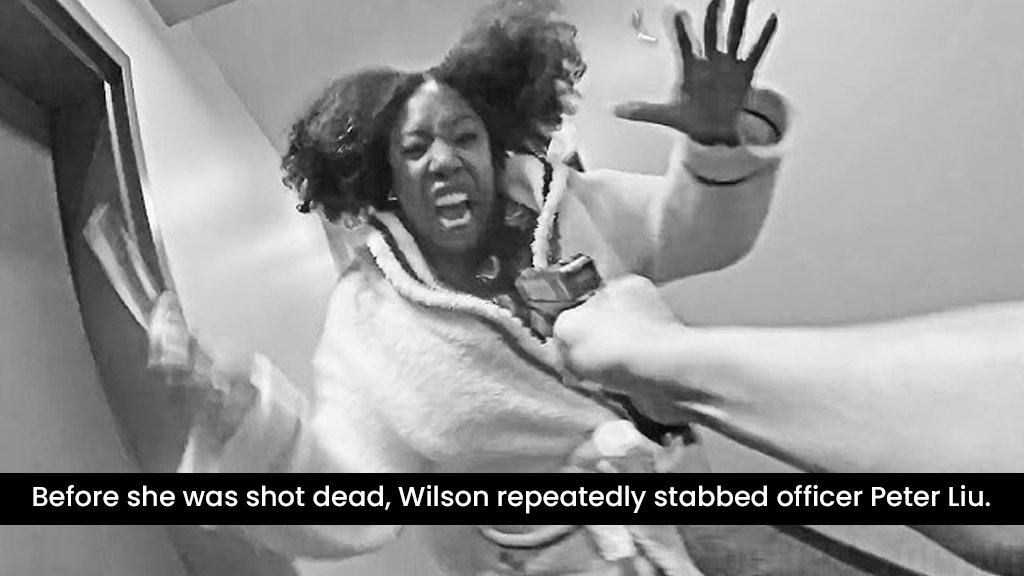Introduction: An unfortunate encounter
On September 16, 2024, police officer Peter Liu tragically shot and killed 33-year-old Sydney Wilson during a welfare check in Fairfax County, Virginia. The event, captured on bodycam film, has sparked extensive discussion on the intersection of law enforcement and mental health. Sydney, who had just received certification in mental health first aid, was apparently anxious when the police came. Moments later, a knife encounter would result in her death; many would wonder whether this might have been avoided.
Mental Health and Law Enforcement: A Crisis Growing Right Now
The death of Sydney Wilson emphasizes the mounting conflict between police enforcement and mental health assistance. Officer Liu frequently answers calls related to mental health issues. After sharing her enthusiasm for mental health awareness on social media, Wilson found herself on the other side of a safeguard system. Initially, a certified mental health counselor noted Wilson’s troubled situation and called the police to check on her.
Despite the officer’s crisis intervention training, the situation quickly escalated. Wilson forced the cop to act in self-defense by lunging at him with a knife. The interaction highlights a more general problem: are police personnel equipped enough to manage mental health crises? And in such circumstances, what part ought mental health experts to play?
Public Reactions to Bodycam Footage: A Nation Split
The public debate gained impetus after the publication of the bodycam video. With a knife in hand, Wilson opened her apartment door before sprinting towards Officer Liu in the video. Wilson kept moving forward in spite of the officer’s repeated instructions to “back up,” therefore leaving him with no option but to discharge his firearm.
The video sent off conflicting emotions. Some said that Officer Liu defended himself in a perilous scenario, acting sensibly. Others noted the difficulties of handling someone in the middle of a mental health crisis and speculated Wilson lacked control over her behavior.
One reader captured this conflict: “It is not rational to expect someone having a psychotic break to calmly respond when a cop points a gun and shouts, ‘Back up.'” This point of view emphasizes the careful balance police personnel have to make between saving their own lives and defusing conflicts.
Lessons on Mental Health Crisis Intervention
The tragic outcome of this interaction raises challenging questions about the interactions between mental health providers and law enforcement. Like many counties, Fairfax County has initiatives matching mental health experts with police personnel on calls involving mental health emergencies. But since they were on their way to another service call, no counselor could join Officer Liu for Wilson’s apartment call.
Fairfax County Police Chief Kevin Davis praised the handling of the matter, but the case raises a crucial question: is the current system sufficient? Could a qualified counselor have stopped the escalation? Alternatively, was this scenario just too risky for even a mental health specialist to manage?
This instance has strengthened demands for reforms, including more mental health resources, more counselors available to accompany police, and more law enforcement training in de-escalation strategies particular to mental health emergencies.
Public and Institutional Responses: The Georgetown Controversy
The episode generated debate outside of law enforcement circles as well. Georgetown University’s women’s basketball team, where Wilson had participated throughout her student years, lamented Wilson’s demise on social media, calling it a “tragic loss.” Critics of the article, however, responded angrily, pointing to Wilson’s actions as a violent attack on a police officer. One response I encountered was, “Is this a tragedy?” She came close to murdering a police officer.
While some contended that Georgetown’s memorial was inappropriate given the situation, others connected with Wilson, stressing her mental health problem and expressing grief over the sad end to her life. This gulf captures the larger national debate on how society strikes a balance between empathy for those in crises and responsibility for aggressive behavior.
Finding a Path Forward
Sydney Wilson’s narrative is not one-off occurrence. It reminds us that mishandled mental health emergencies could have terrible results for everyone engaged—including the initial responders as well as the person in crisis. This scenario necessitates the enhancement of treatment systems, incorporating mental health experts more into crisis response and equipping law enforcement to handle these delicate situations with greater grace.
We have to question ourselves going forward: how can we design a system that not only guarantees public safety but also better helps persons like Sydney Wilson? Those assigned to guard the public must also be kept safe. This issue tests law enforcement departments, mental health activists, and society in general.

